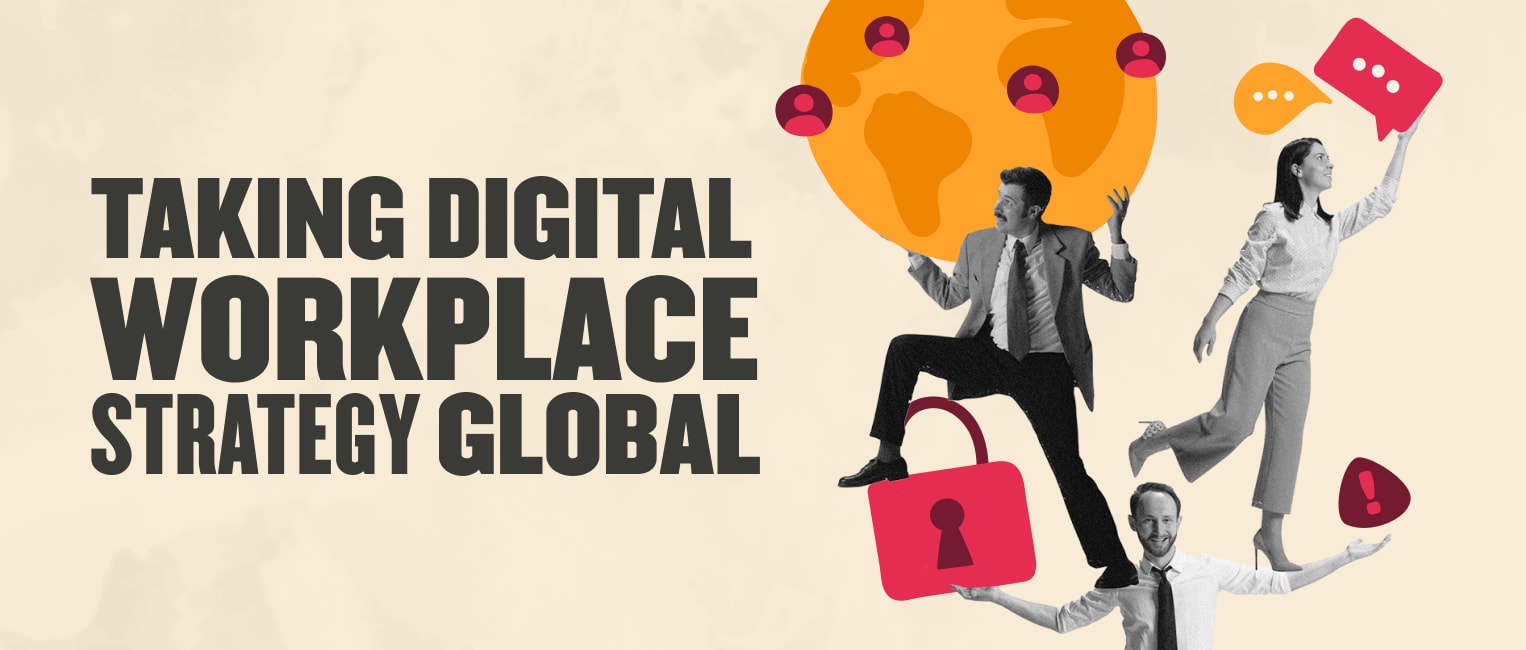Digital is here, and digital is here to stay. No matter which industry your organization works in, or how your teams are distributed, technology is almost certainly crucial for keeping the cogs turning.
There’s no doubt that workplace technology is transforming the way we do business. Digital infrastructure lets companies automate their processes and workflows; secure their data with single sign-on (SSO), unified endpoint management, and authorized permissions for critical systems and applications; and communicate and collaborate effectively.
For global companies, digital workplaces are more important than ever, and they’re a key element in enabling efficient, productive, and effective work. HR tech, built around a Human Resources Information System (HRIS) is well established, but HR and IT professionals must also work together to leverage a wider digital-first employee experience.
A digital workspace that supports managers to truly connect with, motivate, and inspire their teams is a critical foundation for business success. Here are the key technologies—and conversations—that every HR and IT team have when considering how to create a truly effective digital workplace strategy.
Communications technology
Without clear, easy, and effective communication, teams are simply unable to perform. When globally dispersed, your people need communications tech that supports seamless real-time and asynchronous collaboration between teammates who might be full-time, freelance, hybrid, or fully remote.
As well as internal team communications, consider how your tech stack helps managers inspire, motivate, and get the best out of their people. With greater engagement comes higher retention, and middle managers are on the front line when it comes to connecting with your talent. Put simply, they are the glue that binds your organization together, and today more and more professionals are turning to their supervisors for direction and support in challenging times.
Giving your managers tools that help them facilitate one-on-ones, provide invigorating training, host support or mentoring groups, and gather insights from surveys and feedback will help them to champion your business and keep your top talent with you for the long haul.
Look at the applications you’re currently using, whether it’s Google Workspace (think Docs, Chat, and Meet), SharePoint, Slack, Zoom, or Teams, and explore how you can improve workflows for everyone.
Remote desktops
When surveyed for HP’s Hybrid Work Report 2022, 60 percent of IT leaders reported that hybrid work is a strategic need. As a result, 43 percent are using remote desktops in their businesses, and 58 percent expect to increase spending on them.
While remote desktops are a valuable tool for helping your people connect with on-prem systems, they also present plenty of challenges. Specifically, 59 percent of respondents to HP’s survey reported experiencing issues with latency and pixelation, 34 percent found the maintenance and management of remote desktops cumbersome, and 32 percent reported a tricky implementation process.
Clearly, remote desktops are an imperfect tool for supporting effective hybrid work. Talk to your managers and their remote teams about your current technology support for hybrid work, and explore whether you’re using the best tools for their needs. With your HR team’s drive to connect people and improve their experience and your IT professionals’ ability to unpack the best technological solutions, you can create a more powerful toolbox that makes everyone’s life easier.
The right equipment, to the right people, at the right time
Choosing the right tools for your teams to use is only part of the challenge for IT professionals working in a global business. Delivering the equipment your people need, promptly and efficiently—and for the right price—is also key.
Today’s team members need laptops, cellphones, and tablets with access to relevant software such as Salesforce, Amazon Web Services, and your chosen communication tools. Ensuring efficient delivery and relevant training support will enable them to operate efficiently and collaborate smoothly, wherever they are in the world.
Getting this right will support the foundations of a company culture that nurtures new joiners and helps fuel productive teams. It will also reduce expense wasted on inactive team accounts, replacement kits, or delivery errors.
Recommended For Further Reading
Cybersecurity
The mere mention of cybersecurity is enough to send chills down the spines of most IT professionals. Since technology has become so central to our ability to work, commercial data, intellectual property, and critical systems have also become exposed to the risk of attack.
Unsurprisingly, many IT and cybersecurity teams take a highly cautious approach to their company’s systems. Security is essential, but it’s important to maintain an open dialogue with managers and business leaders. That way, you can ensure that your high-integrity cybersecurity policies can work hand in hand with an easy and uninterrupted workflow across the organization.
Like with anything, the optimum result is a balance: While too strict a security profile might prevent effective work, a policy that is too loose can leave your data vulnerable. By working together, IT and HR professionals can find the optimum mix.
It’s time to talk global tech
Leveraging well-planned technology infrastructure is fundamental to the success of global businesses. When HR teams and their IT and cybersecurity colleagues work together, they can create digital workplace strategies that empower managers to achieve more. With secure technology platforms, teams can communicate better, collaborate better, and more consistently perform at a higher level.


